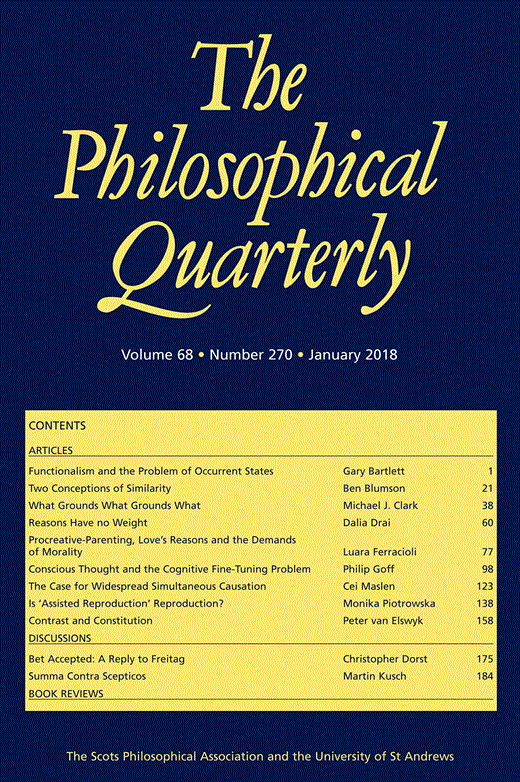-
Views
-
Cite
Cite
Peter van Elswyk, Contrast and Constitution, The Philosophical Quarterly, Volume 68, Issue 270, January 2018, Pages 158–174, https://doi.org/10.1093/pq/pqx028
Close - Share Icon Share
Abstract
The pluralist about material constitution maintains that a lump of clay is not identical with the statue it constitutes. Although pluralism strikes many as extravagant by requiring distinct things to coincide, it can be defended with a simple argument. The monist is less well off. Typically, she has to argue indirectly for her view by finding problems with the pluralist's extravagance. This paper offers a direct argument for monism that illustrates how monism about material constitution is rooted in commonsense as reflected in linguistic practice. In particular, I argue that everyday judgements that are contrastive like The statue is beautiful for a lump of clay entail the identity of the statue and the clay.





